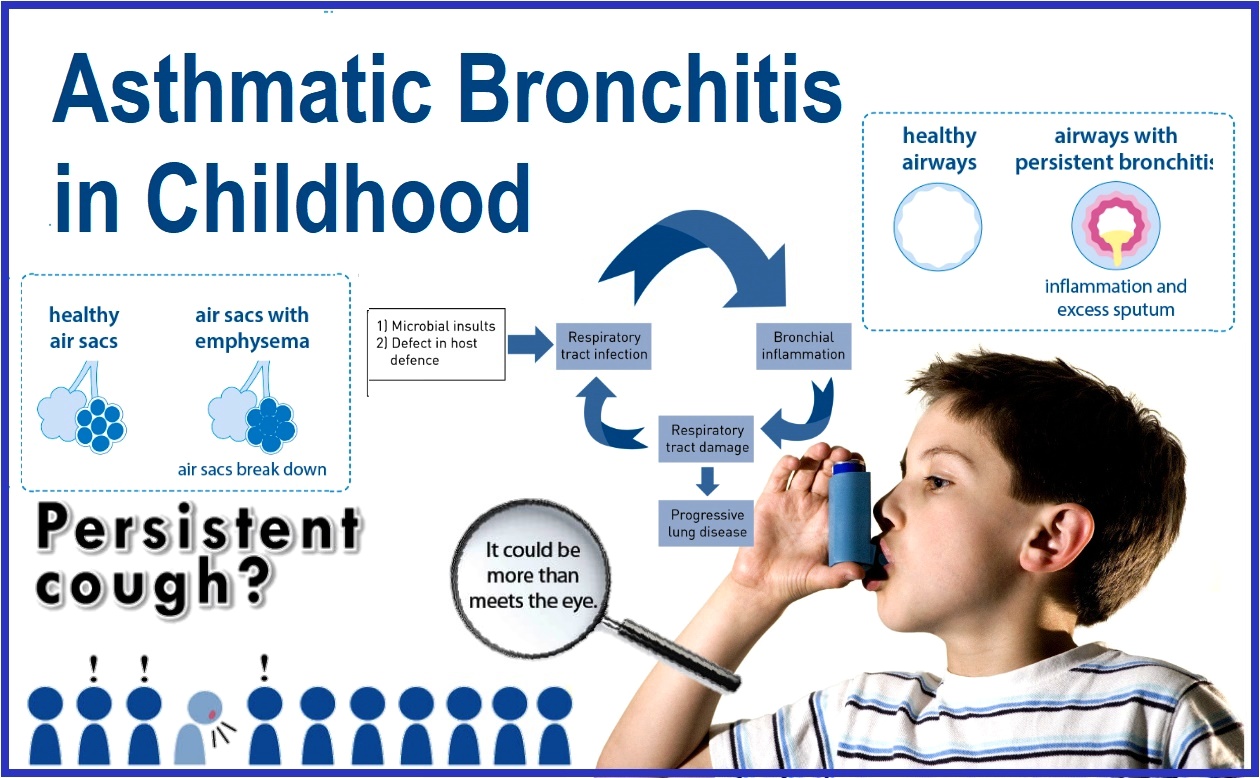Asthmaticbronchitis in children Homeopathic treatment

Anyone who has witnessed someone in the throes of a severe asthma attack, with the victim's attendant feelings of helplessness and panic, knows that this disease can be cruel and dangerous. The word "Asthma" comes from the Greek, meaning, "to breathe hard." "Breath is life and life is breath". Breathing is such an accepted reality of life that we do not give much significance to it until we are deprived of it. Ask an asthma patient the agony and distress of waking up in the middle of the night, with a feeling of suffocation, short ineffectual cough, labored breathing, and wheezing. Asthma is a chronic lung disease characterized by inflammation and spasm of the bronchial tubes (airways) that transfer air into and out of the lungs. The bronchial tubes of an asthmatic patient are hypersensitive and react excessively to things that are minor irritants to people without asthma. Symptoms vary from person to person, but may include coughing, producing a lot of mucus, paroxysms of wheezing, difficult breathing and tightness of chest, feeling of suffocation and anxiety. Asthma can happen at any age, but most often develops in childhood. This health condition seems to be increasing in our population. It affects one in ten adults and one in seven children. Conventional doctors devise action and treatment plans based on a stepwise approach to an attack's onset and severity, but homeopathy seeks to address the disease at its source. A homeopath will investigate not just the disease mechanism but the patient's overall well-being in every regard, all the physical and even emotional attributes. There are many downsides to the traditional approach, including the side effects of and permanent dependency on the medications. Groups of asthma medications include inhaled corticosteroids (ICS's), short-acting beta-agonists (SABAs), long acting beta-agonists (LABAs), and leukotriene receptor antagonist (LTRAs). Some well-known and widely prescribed specific medicines are albuterol, ipatropium, cromolyn, nedocromil, budesonide (Pulmicort), omalizumab, ipatropium, formoterol (Foradil), salmeterol (Serevent), montelukast (Singulair), zafirlukast (accodate), zileuton (Zyflo), and prednisone. For example, the side effects of ICS's include growth retardation, and mouth yeast; for LABAs they include headaches, tremors, palpitations, and cramps; and for LTRAs, headache, nausea, dizziness, rashes, fatigue, and stomach aches. These are not mild, benign medications at work. Plus, the treatment itself can be a major drain on the body. For example, often a child who is able to get an asthma attack under control with the use of a nebulizer will be left too weak from the medication itself to go to school.